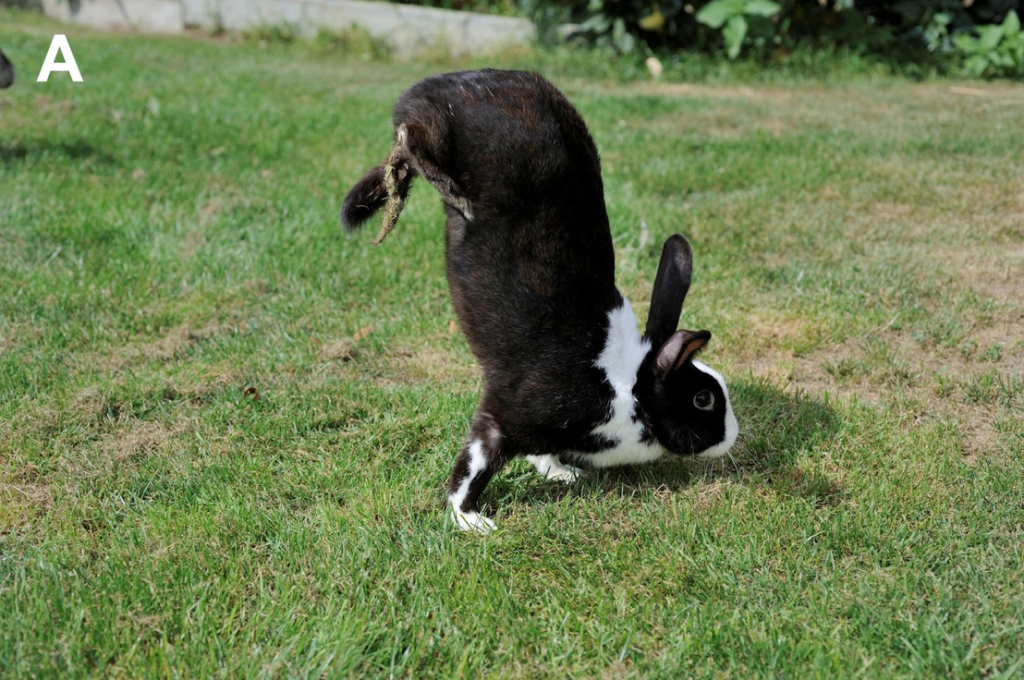Gene Defect Turns Rabbit Hops into Acrobatic Handstands
By Diana Abbasi, C2ST Intern, Rush University
Sauteur d’Alfort is French for Alfort’s jumpers but interestingly, the breed of rabbits that carry the name don’t jump at all. Most rabbits push off the ground with both their back legs in order to move quickly, however, these unique rabbits send their back legs sky high and walk on their front paws. Now, researchers have identified the specific gene mutation that leads to this atypical limb movement in these rabbits.
A recent study published in PLOS Genetics suggests that the RAR-related orphan receptor B (RORB) gene is the likely candidate for disrupting the jumping gait in these rabbits. To find the gene responsible for the defect, researchers bred sauteur d’Alfort rabbits with rabbits that are not afflicted with the jumping defect. By mating the two breeds, the researchers were able to produce a combination of typical hopping rabbits and some rabbits only capable of performing handstands. Using genome sequencing technology to seek out the genetic variation between the two offspring groups, the researchers found a specific mutation in the RORB gene.
The RORB protein, encoded by the RORB gene, is a transcription factor, meaning it controls the activity of other genes, so the mutation has a ripple effect. This protein is produced in a specific group of spinal interneurons, a nerve cell that helps to coordinate left and right body movements. Without the RORB protein, these rabbits lack the ability to coordinate what their back limbs are doing which in turn hinders their ability to hop. Interestingly, when these rabbits walk slowly, they are indistinguishable from other rabbits since this movement doesn’t involve simultaneous movement of the back limbs.

While this handstand is aww-inducing and slightly heartbreaking, the potential applications associated with this research can pave the way to prevent this defect. The researchers conclude that RORB is not just a “hopping gene,” it’s a gene that coordinates limb mobility during movement, so the implications of this research go far beyond rabbits. This study contributes to our basic knowledge of how the spinal cord works in all vertebrates, including humans. Understanding the role of the RORB gene can also potentially help scientists treat motor deficits that are linked to the RORB gene like Charcot-Marie-Tooth Disease, a nerve disease that causes muscle tone weakness in humans.